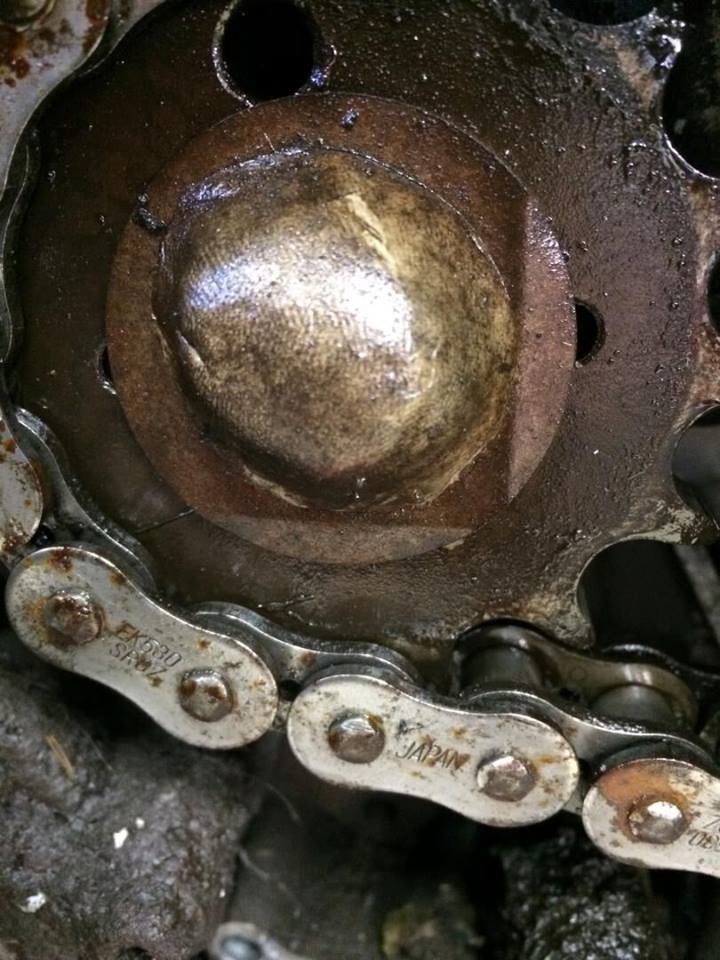So I was now in a possession of an unregistered, unroadworthy, battered FZR600 that had not seen active duty for quite a few years. I say ‘unroadworthy’ because even to my untrained eyes I could spot:
- A rear tyre that was squared off to hell and with just barely 6mm of tread left at the weakest point, not something worth attempting to get past an inspection;
- No horn;
- No low beam;
- No rear reflector (in case they would pick up on it); and
- No idea if the thing would even go and stop at more than walking pace.
The ‘oh Lord what have I done’ feelings had not abated, in fact they were getting worse. There was also the small matter of the clutch being so heavy that I could only just barely pull it in. It was clear that I needed help to at least get the thing road legal again.
This is where the next challenge arose – where to take it.
As I mentioned earlier, Adelaide is a small place, and there aren’t a plethora of bike shops to choose from. There are the major dealers, including several Yamaha ones, but I got the distinct sense that taking a pile of junk to a shiny Yamaha dealer focused on servicing new bikes wouldn’t be the best bet. My discreet enquiries about FZR600s at one of them was met with the same phrase I had already heard – ‘yeah, don’t really see any of them any more’.
Without anyone with a similar bike to hit up for advice, I searched the Googles for a while and eventually found a small repair place on my side of town, and made a booking to drop it in. This one also offered a pickup service, which was good since I had little faith that this thing would even make it the ten kilometres to the mechanic.

It took them a few days to have a look, but when they did I got a text message from one of them that justified my fears. What they sent me was a picture of what they had found when they took off the sprocket cover to give it a quick check. The image shows a blob of, well, something, that had been used to cover, possibly, a retaining nut that stops the front sprocket from flying off at high speed. Best guess is that whoever had put a sprocket on last had overtorqued the nut, stripped the thread, and instead of, you know, fixing it, had put a blob of something hard over the top to hold it on.
The advice from them was pretty dire…

Talking it through with the mechanic, his view was that the only proper fix was to replace the entire shaft, which in turn would mean opening up the engine, which would mean many hours of labour, and that simply swapping the engine with another one would end up being cheaper.
Once again, that kicked-in-the-guts feeling.
This was the first time I also sought a second opinion from a FZR600 group on Facebook, which led to plenty of ‘yeah, seen that before, some people shouldn’t be allowed to own motorbikes’, along with other more creative ideas on resolving the problem, like drilling into the end of the output shaft and working out a way to put a bolt on there to hold the sprocket on. This was the first of many times when I got excellent advice from this group from all over the world, and it would be invaluable later on. If nothing else, it also made me realise that the problems I was facing weren’t new, weren’t unusual and weren’t insurmountable, even if I didn’t know what the specific solution was at the time.
Something also dawned on me at this point, and that was that if I was going to succeed at this project, I needed to get used to the fact that there were going to be plenty of problems along the way that couldn’t be solved immediately. As someone who is used to being in control of things most of the time, this would be a good refresher of what it was like to have no freaking idea how to handle a situation, and that this was indeed ok. In fact it would be part of the territory. I’d get a lot more practice at this along the way too.
With the rest of the problems sorted, and acknowledging the big highlighted sentence that the bike was unsafe, I decided to ride it home anyway without resolving the bodged sprocket. My rationale was that if it had been ridden around already for a while, then it would probably last two or three more careful trips. I asked if they could hold it for a little while longer before I brought it home however, as in the meantime there had been another interesting development, this time in another state, and which I’ll write about next.
Next up: The case of the Victorian parts-bike
